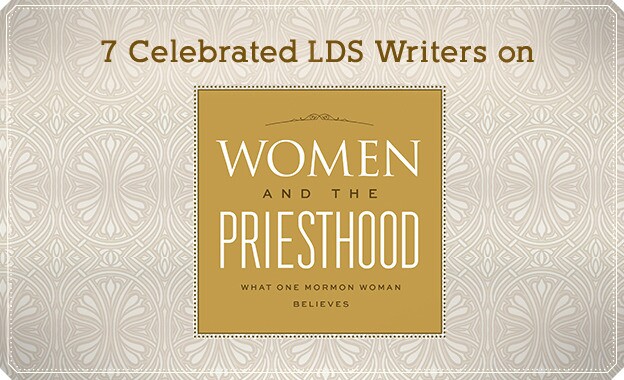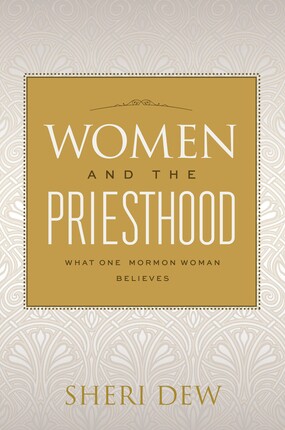
After spending the first three chapters addressing the place and perception of women in the LDS church, Dew turns in chapter 4 to the topic of larger frameworks. Several points of interest emerge in her treatment, two of which I will address.
As a prelude to talking about priesthood Dew addresses the nature of the Restoration. And that, of course, entails a discussion of a comprehensive plan of human progress and salvation that precedes the creation of the earth itself, and which was itself partially derailed in what Mormons have come to refer to as “the Great Apostasy.” I say “partially” derailed because, intentionally or not, Dew alludes to the crucial component of the original church in need of restoration, without imposing a blanket condemnation on the past that is so much a part and parcel of most twentieth-century discussions of the topic. (Along the way, she moves beyond tired cliché to describe mortality’s purpose as making choices and “facing the consequences of our decisions,” and describes the Fall as having a “forward” direction). In other words, consistent with characterizations by Joseph Smith and his early successors, Dew alludes to apostasy not as utter blightedness and loss of truth (for the church had retreated into the wilderness in both the Revelator’s and Joseph’s language, not disappeared entirely), but as the loss of God’s “authority, and His ordinances.”
Ever since the Reformation, authority and ordinances have been considered a rather expendable component of Christian institutions. Powerful as signs of grace, perhaps, but not the indispensable vehicles of God’s saving power that they were for the Catholic tradition. This is why it is both refreshing and bracing to hear Dew revive the plain-talking LeGrand Richards on this point, with his second-hand allusion to Mormons as “ignoramuses” for failing to see that this shared perspective with the Catholics overwhelms secondary factors that have wedded us in popular imagination to Reformation churches as closer in spirit and substance to the Restoration.
Mormon theology directs the Mormon mind to the remarkable proposition that God has deigned to share his exalted condition and nature with all those (all those!) willing to follow his guiding precepts. And that condition and nature are, in Mormonism’s unique theology, intensely and emphatically personal and relational. God’s heaven consists of a web of holy associations, intimate friendships, and eternal, conjugal union. And here is the point that must underlie all considerations of priesthood and ordinances in the LDS Church: those relationships are welded together in holy temples, by divinely revealed ordinances, and through the authority of the priesthood restored to Joseph Smith. That is why, in the final analysis, Dew is right to make God’s “authority and His ordinances” the irreducible focus of the Mormon message, essential core of apostasy’s force, and raison d’etre for the restoration.
This leads to the second, related point Sheri implicitly makes in this chapter. There is no model or precedent outside the Church for a power so conceived and executed. In her understated words, “suggesting that the Lord’s kingdom should be organized and led like man-made institutions seems particularly odd during an era in which the fallibility of man is constantly on display.” There are discussions to be had regarding the profile, the place, the role of women in the LDS Church. There are good reasons to revisit Joseph’s meaning and intentions in founding the Relief Society as an organization parallel rather than subordinate to the male quorums. LDS women and the LDS priesthood, in other words, is a fraught topic with room for vigorous discussion and exploration. But those conversations need to unfold within a framework that understands priesthood in terms of this eternal context and divinely established origin, not in terms of corporate culture and terrestrial analogues. As section 121 reminds us, priesthood is a principle of love and entreaty, of welding and binding together, not a method of control, source of influence, or occasion for division.
Fiona Givens recently retired from directing the French Language program at Patrick Henry High School in Ashland, Virginia. A longtime collaborator in her husband Terryl’s books, 2012’s The God Who Weeps was her first coauthorship.
In Women and the Priesthood, beloved author Sheri Dew explores the doctrines surrounding a topic that is crucial for both women and men to understand: the role of women in the LDS Church and their relationship with the priesthood.
Key discussions include the varying responsibilities of men and women in the context of key doctrine of the Church and the eternal truths that women are vital to the success of the Lord's church, that God expects women to receive revelation, and that both men and women have access to God's highest spiritual blessings.
This enlightening book shows how studying the doctrine of the priesthood will help you find the answers you seek about women and the priesthood, about women in the Church, and about the vital influence righteous women can have in the world. Get it now Deseret Book.


